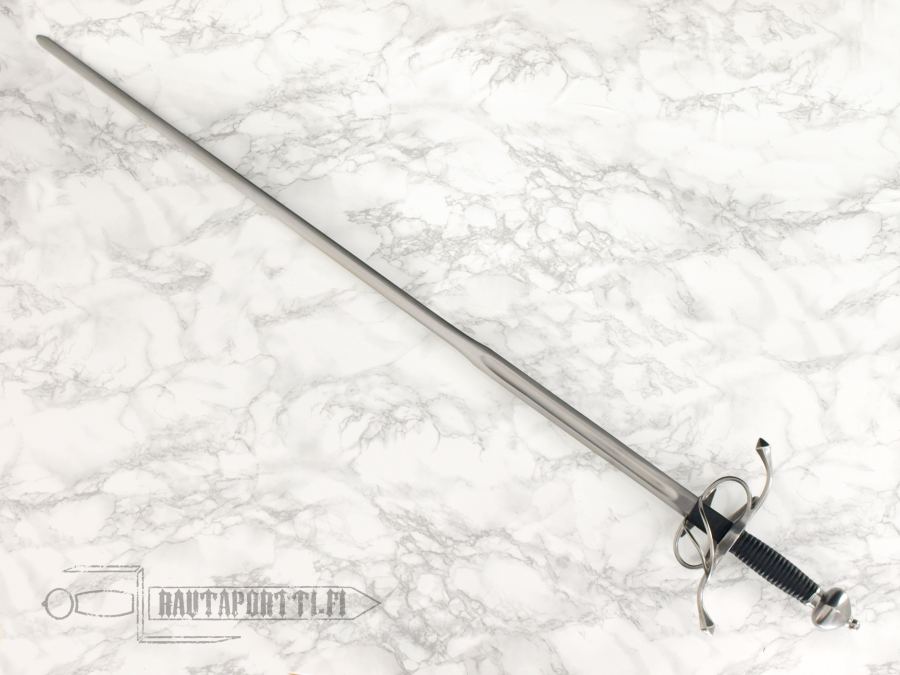So I'm planning to participate in my second mordheim campaign and ive decided to use the conquistador range to make a band of tileans (probably done quite a bit by wargamers already) I've noticed that the kit has swords but no rapiers.
My question is about whether there is another wargames Atlantic box/frame to purchase that would provide the adequate fencing arm I desire to probably work with the bucker or go freehand.
Alternatively something I could use as a secondary option
Many thanks to all the responses!
P.s would of participated in the second competition but your deadline is very short and I only just discovered the thread.
Well for a proper "fencing pose and sword" the only plastic set that comes to mind is the ECW command sprue sword sold by Warlord's games.
That said I suppose you could also take the NCO sword from the Wargames Atlantic British Riflemen sprue or the straight swords from any of the Nappy cavalry/dragoon kits out on the market or the Victrix Highlander Claymore swords, though in all those cases you might want a hobby saw on hand😉.
Not sure how much it'll help in your case, but I THINK the swords in the Conquistadores set are meant to be the sort of blade we'd describe as a "rapier", it just doesn't come out very clearly at that scale, due to the slender blades being quite delicate and brittle if they were as narrow as all that. The hilts and guards look just about right, though a bit minimal compared to the sort of fancy basket hilts one might want and expect.
Your mileage may vary on the following video, but this YouTuber's research seems to hint at the narrower blades being more of a civilian option than a military one anyway:
Still, what would be tehcnically accurate and sturdiest to manufacture might be secondary considerations to the aesthetics of what looks/feels right to you! With that in mind, I think one of the traditional tricks for this sort of thing among miniatures enthusiasts is to clip off the exagerrated blades, and replace them with straight-pins trimmed and sunk into the hilt/hand of the figure: you get a very slender "rapier"/foil style blade that way, which can handle a lot more abuse than any plastic or soft white metal blade would!



The images above for a white metal Reaper mini in the same 28mm scale as the Wargames Atlantic Conquistadores were taken from the how-to in the Reaper Miniatures forum by Froggy the Great, see that page if you need a very much more detailed how-to, but I think you can get the basic idea of how it works even from those three pictures alone - I think the results look great!
@Yronimos Whateley Actually from what I can tell based on extermly shallow research I think the swords in the kit are supposed to be Toledo made short swords that we would likely class as side swords now a days. If they are, then thats actually a senseable option for sailors, adventurers and infantry. If I recall right Rapiers and Epee are normally used for dueling and not really suited for much else combat wise.
Brian's conclusion sounds fair enough to me - a couple searches for things like "Toledo side sword" and the like conjure up results that seem reasably close:




Looks like these sorts of blades are considered a transition between medieval broadswords and later "rapiers", and references to them go hand-in-hand with such names as the Spanish espada ropera and espada ancho, and Italian espada de lato (dressing-sword, broadsword, and side-sword, respectively) seem common enough. Search terms like "conquistador sword" and "colonial sword" ought to pull down a lot of this sort of thing.
Apparently this sort of thing is connected to pirates as well, and I suppose that it wouldn't be a stretch, given the light, nimble, practical every-day-cary nature of the thing for it to have been carried by at least fantasy pirate officers and captains: the whole extended family of these sorts of swords certainly fit a swashbuckler theme!
You can see that the hilts of this progression of sworts could vary dramatically between relatively plain, rudimentary "basket" style hilts, and fairly ornate and elaborate hilts of the sort you'd come to expect from "rapier"-style swords, while the blades were progressing from wider, triangular thrust-and-cut blades to long, narrow thrusting blades of the sort we would think of when hearing the term "rapier".
@Yronimos Whateley this is exactly what I was looking for as a type of sword even if it isn't a sword bit conversion.
The warband member is titled ' duelist' that uses a heavy cloak like a shield and the weapon in the equipment list is called a rapier. I'll have to see with the kits guard is worth keeping.
@Owen Lee if it's just the guards/hilts that are throwing you off, consider trying to add green stuff or something similar to the sword hold hand to make a "basket", etc. hilt. You may want to do that a bit anyways to give the swordsmen more of the “verity of variety” appearance a pre-industrial warband would have.













